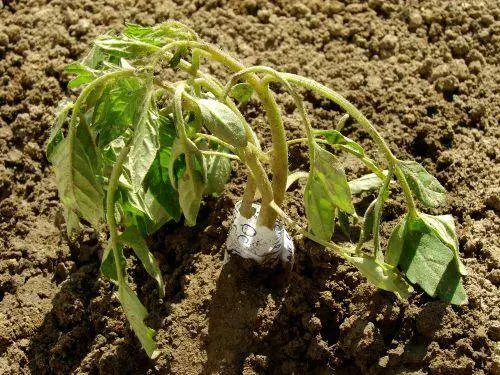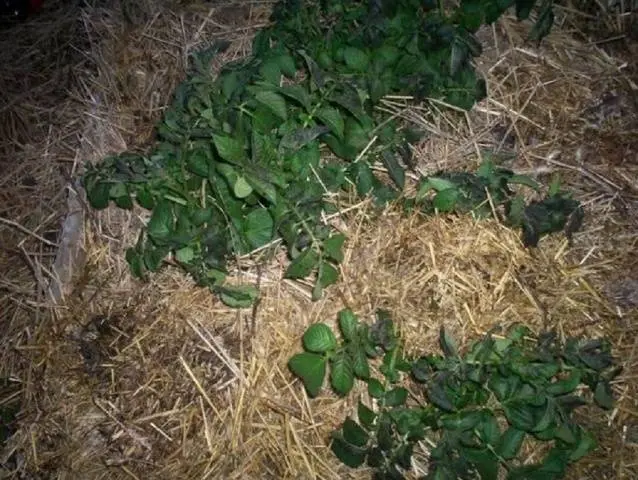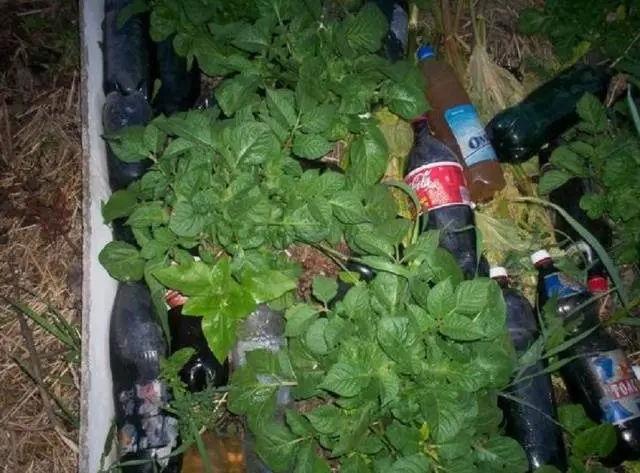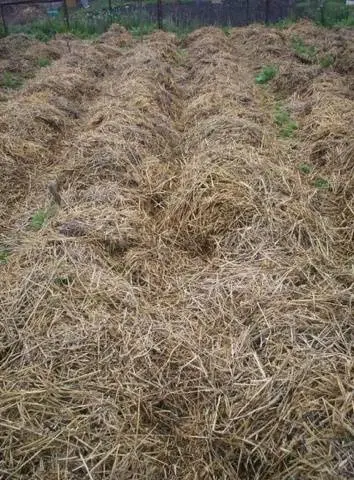Contents
Potato growers try to grow varieties of different ripening periods. This helps to significantly increase the time when you can enjoy delicious potatoes. Early potatoes are my favorite. However, in the spring when growing early varieties of potatoes, there is a danger of return frosts.
After all, it is planted as soon as the soil warms up in order to get an early harvest. Some potato growers carry out the first work already during the February thaw. If frosts begin before the potatoes rise, then there is no particular danger. The tubers are protected by soil, and they are not afraid of a slight frost. But the tops are very sensitive to low temperatures and freeze easily.
When the degree of damage is small, then reserve growth points will quickly restore the bushes. They will grow back and the harvest will be saved. If the tops of the potatoes freeze too much, then this will negatively affect the yield, and the harvesting time will have to be postponed to a later date. Therefore, gardeners need to know how to protect potatoes from freezing in order to save a precious crop.

Ways to protect potato plantings from freezing
As soon as potatoes appeared on the plots, summer residents began to be interested in ways to protect them from frost. Gardening handbooks describe many methods that should be used when the temperature drops. The most basic recommendation can be considered careful monitoring of the weather forecast. The spring forecast is very variable, but the preventive measures taken will not be useless, even if there are no frosts. However, potato growers do not treat all advice with complete confidence. Some methods of protecting potato tops from frost actually turn out to be laborious or inefficient. Consider the most basic ones that gardeners use to keep potatoes from freezing.
Smoke or fumigation
A fairly common and long-known method of protecting potatoes from freezing. It is used not only by potato growers, but also by winegrowers and gardeners. In this case, smoke bombs or smoke piles are used, which is more accessible in the potato area. Smoldering fires are called smoke heaps, which do not give the heat of the fire, but a smoke screen.
Smoke is carried out from midnight to morning. The disadvantage of this method is its laboriousness over large areas and the fact that the smoke can rise much higher than the potato tops. In this case, the efficiency of fumigation of tops from frost is reduced. Another natural factor that can interfere with worthy help to plants is the lack of wind at night. Smoke will rise up, and not spread above the ground.
humidification
A more favorite way for gardeners to protect potato tops from frost. It is considered to be a modern and scientific approach to solving the problem. Evening watering of beds works very well. So that the sprouts do not freeze, you can moisten the plants themselves and the surface layer of the soil. This can easily be done on a site of any size. Especially if a drip irrigation system is laid or there is the possibility of fine spraying. What happens after the evening moistening of potato tops? The water evaporates, forming steam, which has a high heat capacity. It also serves as protection for potato beds, because it does not allow cold air to pass to the ground.
Warming or hilling
When the potatoes have already risen, with the onset of return frosts, they spud them high. With a small size of the tops, you need to fill the tops with earth by 2 cm, this saves the tops even at an air temperature of -5 ° C. But what if the tops are already high, and frosts are expected at night? Bend the plant towards the soil, first carefully sprinkle the top with earth, and then the whole plant. The main thing is not to injure the bush. After the end of the frost, free the tops from the ground. Better to do it during the day. At this time, the soil will already have time to warm up. Then pour each bush with a solution – 15 g of urea and 25 g of nitroammophoska per bucket of water.
This method is effective because after frost, potatoes can sprout new sprouts from buds that are underground.
If the amount of land does not allow for high hilling, gardeners use straw.

But for early potatoes, this method is not entirely suitable. Straw to protect the tops of early potatoes is replaced with non-woven covering material or plastic bottles.

Bottled water heats up during the day, and in the evening gives off heat to the potato ridges, protecting them from frost.
seedling shelter
So that the tops do not freeze, the shoots must be covered. To do this, use a polyethylene film or spunbond.

Experienced potato growers recommend making arcs from PVC pipes or metal. They are installed over potato ridges and covered with a covering material.
It is even easier to make a shelter with the help of pegs driven into the edges of the ridges. Covering material is thrown over them and pressed with stones. Potato tops are reliably protected from frost. Barley crops in the aisles serve as a natural cover for the tops from frost. It grows faster and protects the tops. After the threat of frost has passed, it is mowed down and left in the garden to fertilize the soil.
Increasing the resistance of potatoes
With a large enough tops, it will be problematic to cover it. Therefore, potato growers save plantings by treating them with drugs that increase the resistance of potatoes to temperature extremes. Regulators that strengthen the immune system of potato bushes are suitable. They are used strictly according to the instructions for watering and spraying plants. Among the most common are Immunocytofit, Biostim, Epin-Extra or Silk.
Restoration of damaged haulm
When potato tops are frozen, there is a real threat of losing part of the crop. Frozen tops of potatoes must be urgently restored. The methods depend on the time of frost and the stage of development of potato bushes. If this happened at the time of budding, then they can be strengthened by shading from sunlight.
The second step is to feed the affected plants. If the tops of potatoes freeze from frost, then it is good to apply potash fertilizers or wood ash. To restore the green mass, urea is added.
Experienced potato growers add spraying of bushes with “Epin” or boric acid with an interval of 7 days.
When planting potatoes especially early, be sure to take care of ways to protect the tops from recurrent frosts.

If you take action in time, then your favorite variety will not freeze and will please you with an excellent harvest.









